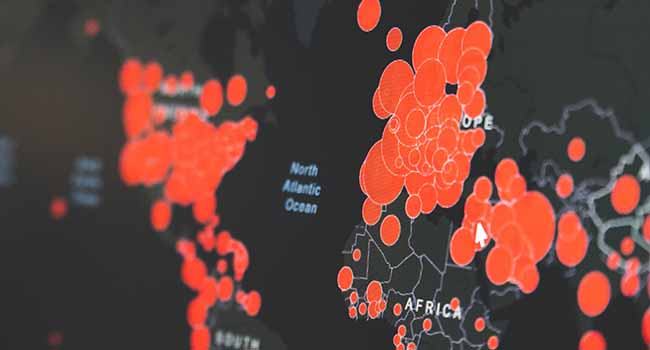 What will happen to the economy once we get through this pandemic?
What will happen to the economy once we get through this pandemic?
We’re coping day to day with social isolation and, for those of us lucky enough to still have work, the challenges of working from home or being out there in an infected world.
First, we want to know when all this will end. The estimates we’re given range from weeks to months to years.
Even if we don’t know when, sooner or later we will get past COVID-19. But what shape will the economy be in at that time?
Having gone through a plague, the last thing we want is to then be faced with a Dirty ’30s-type depression.
Forecasting is always difficult, particularly when facing something very unusual. The last pandemic was the Spanish flu 100 years ago. The world was much less global and much less connected. It certainly was much less developed technologically, whether in communications, transportation, genomics or any other field.
So we really have no history to guide our outlooks.
Nevertheless, even if we can’t predict exactly what will happen, we may at least eliminate some unlikely possibilities.
While the pandemic lasts, the economy will remain as ill as many COVID-19 victims. Many businesses are closed or cutting back. Unemployment in a matter of weeks is moving from a 50-year low to a 50-year high.
The dramatic downturn led me to initially consider a V-shaped recession – a very steep and fast decline followed by an equally quick recovery.
Alas, the duration of the pandemic means that the resulting recession will be more of a U than a V. The bottom of the U will last at least as long as the pandemic, and however long it will take to get consumers spending again and get businesses back up to speed. Some sectors (I’m thinking the cruise ship business) will take a very long time to recover and some businesses have already been laid to rest.
Now for some good news.
The economy will not be an L, falling dramatically and then creeping along the bottom indefinitely. That’s what happened in the 1930s, and it took Second World War to get the economy going again.
Government policy was one reason that the Great Depression lasted so long. Spending is what keeps an economy moving. When consumers and businesses don’t spend, government should start pumping money into the economy to get things going. In the 1930s, governments did the opposite, sticking to balanced budgets and reducing their spending as the economy tanked.
But today, federal and provincial governments are ignoring their bottom lines and funding programs to help the people and firms affected by the pandemic.
The programs may not be perfect. Most seem to assume that Canadians still work in full-time, permanent jobs in medium to large companies. However, many of us no longer do.
We will also be forced to while away the time of our social isolation on government websites trying to figure out what benefits, if any, will apply to us and how to get them.
Most Canadians, once the pandemic is over, will be very happy to visit a restaurant or visit family in another city, and to start spending again.
The good news is that, historically, pandemics have been followed by rising wages. In the past, that was due to the very large number of deaths and the resulting shortage of labour.
Today, we should be able to keep the number of deaths in check. But we were experiencing labour shortages in some parts of the country even before the pandemic and they will reappear as soon as it’s over. There will be work for all.
If the work that you’ve been doing doesn’t offer the pay and opportunities you would like, take advantage of your time at home to do some online learning and pick up a skill that will advance your career.
Finally, a story for all those whose businesses are on the edge or already over it.
My grandparents’ generation came as immigrants from Europe with $10 in their pockets and no language. They started a business. When the Dirty ’30s hit, it failed.
“What are we going to do?” cried one.
“Well,” said the other, “we still have the $10 we came here with and now we know the language.”
They started another business. By the time they left it to their children, it had hundreds of outlets.
The post-pandemic world will be different. We’ll use technology more effectively, especially in fields like medicine and education. We’ll be less reliant on cars, doing more virtually.
We’ll deal with the danger of having a single supplier or customer by diversifying our suppliers and our customers. Trying to become self-sufficient in a global world would hit our standard of living too hard.
And we’ll see job markets, stock markets and our overall economy bounce back and continue to grow.
We just don’t know exactly when that will happen.
Troy Media columnist Roslyn Kunin is a consulting economist and speaker.
The views, opinions and positions expressed by columnists and contributors are the author’s alone. They do not inherently or expressly reflect the views, opinions and/or positions of our publication.


